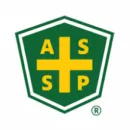SDS – Safety Data Sheet
What is an SDS?
The simple explanation is that an SDS is a document that accompanies a hazardous chemical and substance and that outlines the dangers, composition, safe handling, and disposal of that chemical or substance. The name SDS simply refers to a safety data sheet that is constructed to conform to the UN’s Globally Harmonized System (GHS), which mandates use of a standardized 16-section format, arranged in a strict order.
With GHS adoption happening around the world, most current discussion of safety data sheets focuses on the GHS-aligned SDS format. However, even after countries complete GHS adoption, it’s possible that some manufacturers will have missed target dates for creating GHS-aligned SDSs, as has been the case in the United States. As a result, employers may need to continue maintaining safety data sheet libraries that include both SDS and MSDS formats.
Chemical Management from VelocityEHS gives employers access to the industry leading database of millions of safety data sheets, and the ability to filter results to quickly identify documents in a variety of regulatory formats — including GHS — making it easy to secure whichever format is necessary for a specific workplace. If you are looking for an MSDS or a newly formatted GHS SDS, try our SDS/MSDS Search tool, or start a free trial of the VelocityEHS solution now.
With the transition from old MSDS formats to the new GHS-styled SDS being such a major part of GHS adoption, we have outlined three areas where organizations that traffic in SDSs may face challenges — SDS authoring, SDS management and SDS training.
How VelocityEHS Can Help
VelocityEHS is the leader in SDS and Chemical Management. With the industry’s best SDS database, backed by easy to use tools for printing GHS aligned labels and providing Right-to-Know Access to employees, your people can work with confidence. Our library of SDSs includes millions of documents, and your people can request missing items with the click of a button. HazCom regulations around the world are on an aggressive schedule of evolution and updates, VelocityEHS is the secret to staying ahead of compliance.
What is an SDS?

Making the switch from paper to electronic SDS/MSDS management couldn’t be easier. Just send us your safety data sheets and our team of experts will convert your paper and/or already converted electronic files into your very own eBinder.

Request a Demo
Have questions about the VelocityEHS Accelerate® Platform? We’ve got you covered with the answers you need.
Partner with the most trusted name in the industry
Stress less and achieve more with VelocityEHS at your side. Our products and services are among the most recognized by industry associations and professionals for overall excellence and ease of use.





